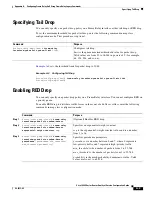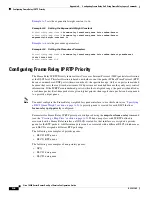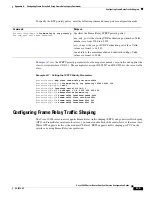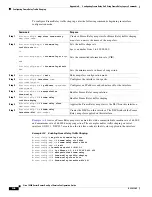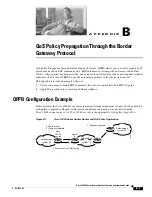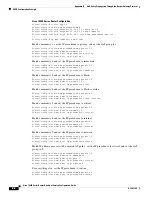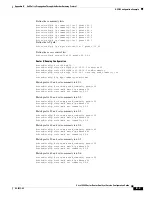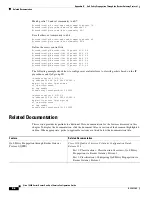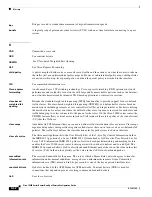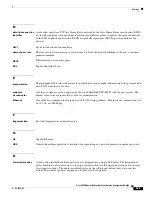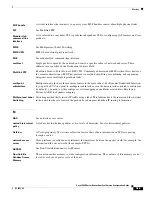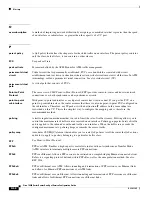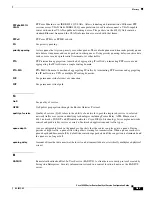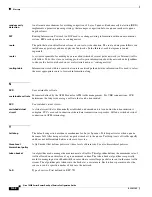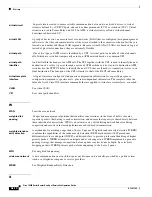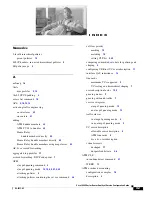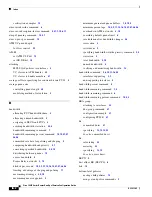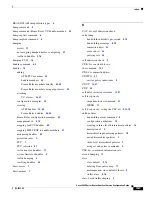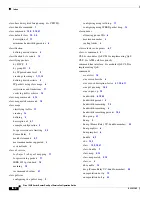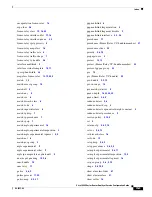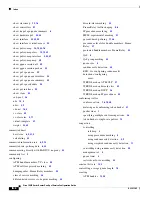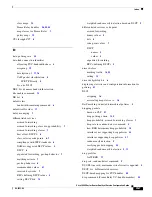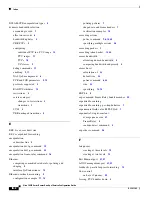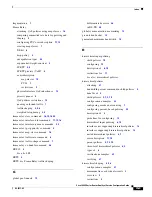
Glossary
GL-6
Cisco 10000 Series Router Quality of Service Configuration Guide
OL-7433-09
O
oversubscription
A method of improving network utilization by assigning a committed rate that is greater than the speed
of an interface or subinterface, or greater than the capacity of a VC port.
P
parent policy
A QoS policy that defines the shape rate for the child traffic on an interface. The parent policy contains
only the class-default class; it can contain no other classes.
PCR
See peak cell rate.
peak cell rate
Parameter defined by the ATM Forum for ATM traffic management.
permanent virtual
circuit
Virtual circuit that is permanently established. PVCs save bandwidth associated with circuit
establishment and tear down in situations where certain virtual circuits must exist all the time. In ATM
terminology, called a permanent virtual connection. See also virtual circuit (VC).
permanent virtual
path
A virtual path that consists of PVCs.
Point-to-Point
Protocol
The successor to SLIP, Point-to-Point Protocol (PPP) provides router-to-router and host-to-network
connections over both synchronous and asynchronous circuits.
point-to-point
subinterface
With point-to-point subinterfaces, each pair of routers has its own subnet. If you put the PVC on a
point-to-point subinterface, the router assumes that there is only one point-to-point PVC configured on
the subinterface. Therefore, any IP packets with a destination IP address in the same subnet are
forwarded on this VC. This is the simplest way to configure the mapping and is, therefore, the
recommended method.
policing
A traffic regulation mechanism that is used to limit the rate of traffic streams. Policing allows you to
control the maximum rate of traffic sent or received on an interface. Policing propagates bursts of traffic
and is applied to the inbound or outbound traffic on an interface. When the traffic rate exceeds the
configured maximum rate, policing drops or remarks the excess traffic.
policy map
A modular CLI (MQC) element that enables you to create QoS policies to tell the router the QoS actions
and rules to apply to packets belonging to a particular traffic class.
PPP
See Point-to-Point Protocol.
PPPoA
PPP over ATM. Enables a high-capacity central site router with an Asynchronous Transfer Mode
(ATM) interface to terminate multiple remote PPP connections.
PPPoE
PPP over Ethernet. Allows a PPP session to be initiated on a simple bridging Ethernet connected client.
Refers to a signaling protocol defined within PPPoE as well as the encapsulation method. See also
RFC 2516.
PPPoEoA
PPP over Ethernet over ATM. Allows tunneling and termination of PPP sessions over Ethernet links
and allows for Ethernet PPP connections over ATM links.
PPPoEoE
PPP over Ethernet over on Ethernet. Allows tunneling and termination of PPP sessions over Ethernet
links and allows for Ethernet PPP connections over Ethernet links.


